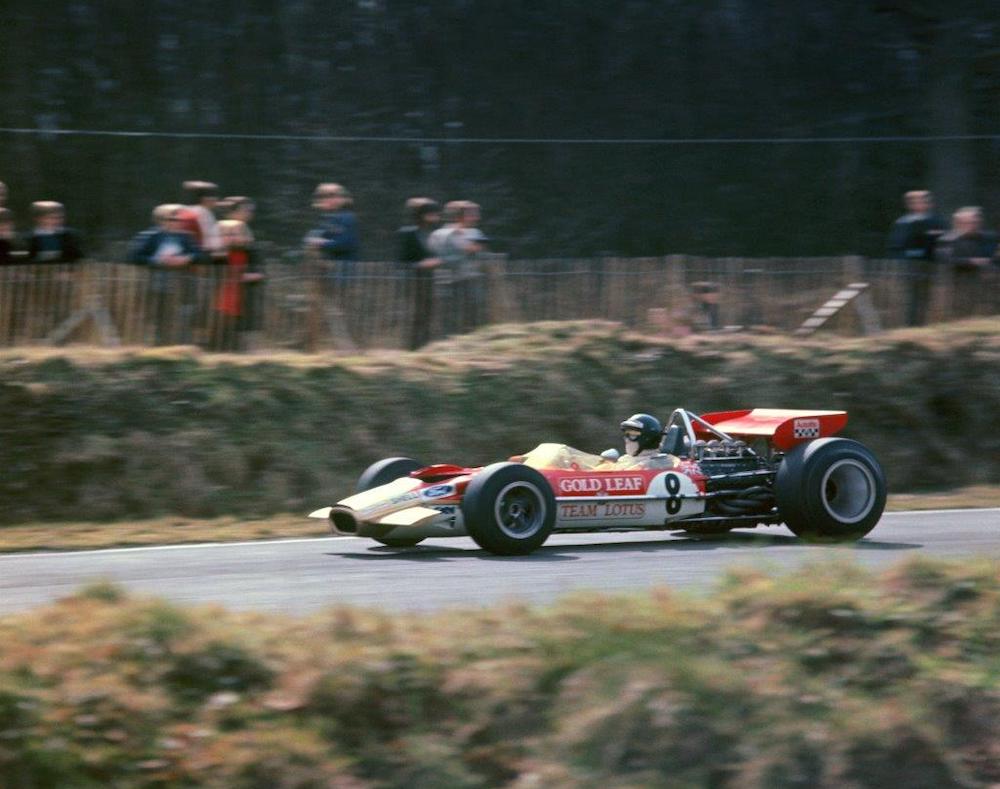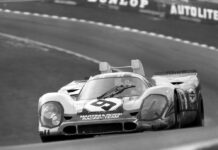On a cold but dry day in March 1970, a large crowd gathered at the Brands Hatch circuit in Kent to witness a non-championship Formula 1 race held prior to the British Grand Prix that would take place in the summer. It was known as ‘The Race of Champions’ and it allowed motorsport fans an opportunity to witness some of the cars and drivers prior to the start of the world championship.

RoC 1970
Some teams decided to give the race a miss, while others entered a single car, partly due to the Sebring 12-Hour sports car race being held on the weekend meaning several drivers were unable to take part. A small incentive to enter was the award of 100 bottles of champagne to the fastest driver in the practice session. Team Lotus entered a pair of Lotus-Cosworth 49Bs for Graham Hill and Jochen Rindt, prior to the introduction of its next generation Lotus grand prix car, the 72. The 49B had been built around the Cosworth Engineering designed (and Ford funded) V8 DFV engine that dominated Formula 1 for over a decade. Despite the 49B not being the quickest car, Rindt claimed fourth place on the starting grid while Graham Hill’s 49B was a second slower in eighth. At the flag, the Yardley-BRM took the lead followed by Jackie Stewart’s ill-handling March 701 and Jack Brabham in his own car with Jochen Rindt just keeping pace. After three laps the BRM slowed and Brabham forced his way past Stewart and the race settled into a long procession until three laps from the end when Brabham slowed and was passed by both Stewart and Rindt who finished in that order.
Jochen Rindt was rapidly becoming established and considered a future world champion once he joined Lotus in 1969 following some impressive performances in uncompetitive sports and grand prix cars, even winning the Le Mans 24 Hours in 1965, albeit in a race of attrition. At the time, the Lotus 49, introduced in 1968, was becoming uncompetitive. At the time it was a ground-breaking design as it was the first car not to use a sub-frame to locate the engine, bolting it directly to the monocoque chassis instead. It was also the first F1 car to use winged aerofoils and the first to carry corporate sponsorship provided by the tobacco company John Player, and was painted in the colours of its Gold Leaf brand. Delays to the new Lotus 72 model meant using the 49B for the start of the 1970 season, and it was Jochen Rindt who recorded the 49B’s last victory in the Monaco grand prix that year. Two races later, the Lotus 72C became available and Rindt immediately put it to good use, winning the next five grand prix to establish a commanding lead in the world championship. Tragically, it was during practice for the Italian grand prix at Monza that a drive shaft broke under heavy braking and Rindt lost control of the Lotus, crashing head on into an armco barrier that had not been installed correctly; Rindt died instantly. With just four races left, Rindt’s points total meant he became the first F1 driver to win the title posthumously.
The photograph above shows Jochen Rindt in the Lotus 49B during the Race of Champions in 1970 en route to second place.
From ‘Moments in Motorsport’ by Trevor Legate.










